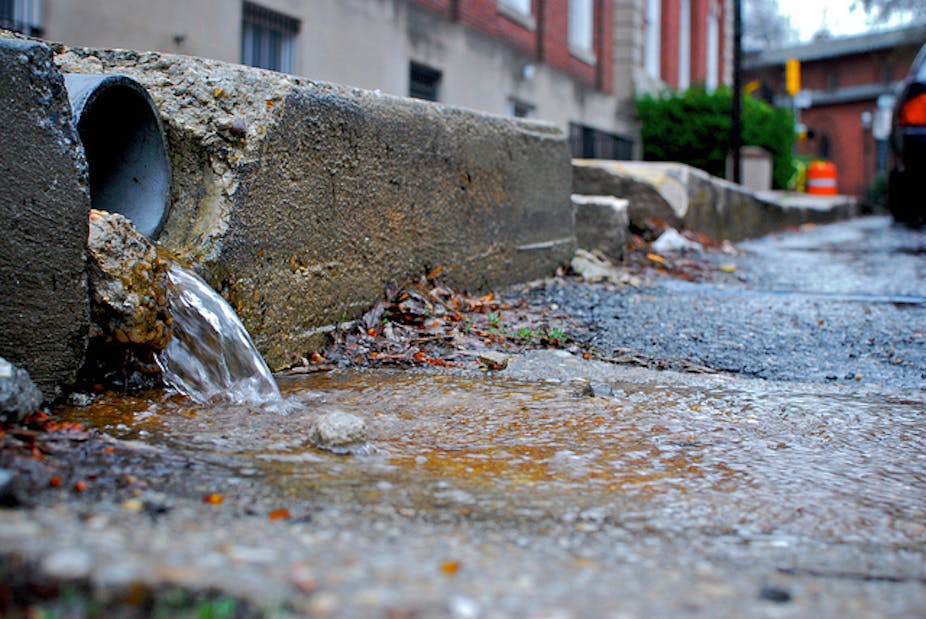Over the past decade, Australians living in capital cities have dramatically reduced their consumption of water from centralised reservoir systems. This has been achieved through the installation of water efficient appliances and fittings, such as low-flow shower heads, changes to patterns of water consumption and increased use of decentralised sources such as rainwater tanks.
A large proportion of this reduced demand is hard-wired into the system through efficiency measures, so a return to the “bad old days” of the water “Wally” is unlikely. An added benefit of this increased water efficiency is that reduced hot water use results in reduced energy consumption in the home. This is especially important in the face of rising electricity costs.
Augmented centralised supplies ought to see Melbourne, Sydney and Brisbane through a combination of population growth, some demand increase and drought. Melbourne is an interesting case, as the city will have a much larger water supply capacity from centralised sources once construction of the Wonthaggi desalination plant is complete, but is already planning for future water supply.
What about a return to drought?
Melbourne experienced the effects of a prolonged drought from 1997 to 2010. The extra rainfall that south-eastern Australia has experienced from 2010-2012 is the result of a strong La Niña – one of the strongest on record. This rainfall has substantially increased the level of Melbourne’s water storages.
The latest update on the La Niña situation is that we are heading back to neutral conditions, and it would typically be expected that an El Niño would follow, bringing a return to drier conditions. It is highly uncertain, but Melbourne could need to plan for another supply augmentation within 10 years.
With this extra breathing space, it is a good time to be considering the next set of water reforms for Melbourne. The recently released Living Melbourne, Living Victoria Implementation Plan sets out recommendations to the Victorian Government on just how to achieve a more resilient water system – comprising both the physical system and the institutional structures that govern it.
Prepared by the Living Victoria Ministerial Advisory Council, the Plan recommends using a greater proportion of decentralised water sources, coupled with changes to planning provisions, and the vesting of all stormwater and wastewater from public infrastructure in the Crown. These changes would see stormwater treated as a resource that can be licensed in much the same way that surface and groundwater resources currently are.
Time for a new narrative for water

Drought brought on a sense of guilt about using water. The narrative of “saving water” has been about turning off taps and letting gardens go brown. During the period of heaviest water restrictions, you could get the proverbial “death stare” if you were watering your garden at all. Signs proclaiming “tank water in use” appeared on suburban lawns; to make sure others knew you were not a water-waster.
Water restrictions were seen to impose a certain set of values on citizens. For example, longer showers were given more value than watering gardens. Water planning was seen as politicised and opaque – justified as a response to a crisis drought situation. The community had limited input into setting objectives and deciding a vision for how water was used.
Harvesting alternative water sources can reduce the damage that torrents of stormwater wreck on urban streams. Irrigation of urban green space can reduce urban heat island effects at local scale. Clean, non-potable water for urban agriculture can help localise some of our food production, increasing food security by a small degree.
How does the Plan measure up?
The Living Melbourne, Living Victoria Implementation Plan includes a recommendation to increase collaboration with stakeholders and to involve the community in setting the vision and objectives for Melbourne’s water system. This is critical, given the negative reception to both the north-south pipeline and the desalination plant.
The Advisory Council recommends that some statutory force be given to the Plan, through amendments to both the Water Act 1989 and various planning mechanisms. It is clearly difficult to strike the right balance between strength and flexibility in these reforms. In this sense the Plan succeeds, although it is necessarily clunky in covering all bases given the complexity and history of the water system in Melbourne.
These reforms are designed for transitioning Melbourne’s complex water system to an improved situation. This Plan is innovative in an Australian context and other cities will do well to follow suit by developing plans for their particular contexts.
In part, this Plan is a turning point in starting a new, and more open, narrative of water use. I recently saw a prediction that, one day, we would actually boast about increasing water use, stormwater in particular, because of the value it brings to our cities. This new vision is a salve to the pain and suffering of water restrictions.

